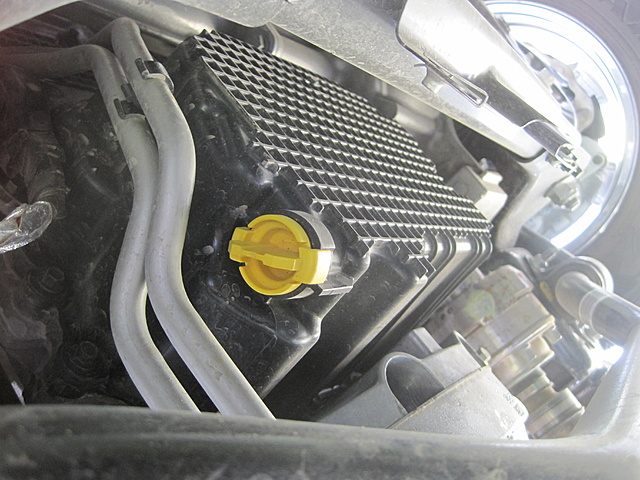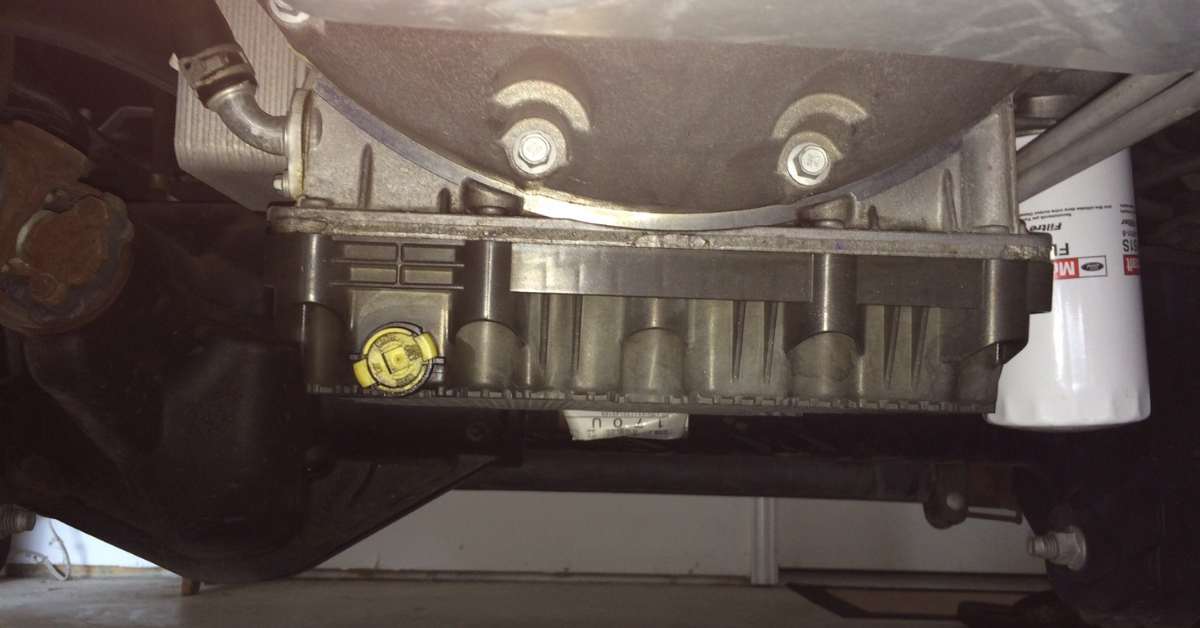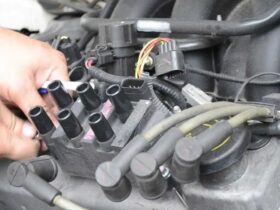Ford vehicles have plastic oil drain plugs designed for easy removal and installation. These plugs are corrosion-resistant and have fewer sticking issues than traditional metal plugs.
However, their delicate material requires careful handling during removal and installation to prevent cracking, which could lead to oil leaks and reduced engine efficiency.
Step-by-Step Guide to Remove a Ford Plastic Oil Drain Plug
1. Locate the Plastic Drain Plug

The plastic oil drain plug is positioned in the engine compartment, specifically at the bottom of the oil pan. Accessing this plug can be challenging due to the surrounding engine components.
To reach the plug, you can:
- Jack up the vehicle: Using a hydraulic jack, lift the vehicle from the correct jacking points as specified in the owner’s manual.
- Use jack stands: Always secure the vehicle with jack stands for stability and safety.
- Crawl underneath the vehicle: If you prefer not to use a jack, you can crawl under the truck, but this approach is riskier due to limited space and potential hazards.
2. Clean the Surrounding Area
Oil residues and grime often accumulate around the drain plug, making removal difficult. Cleaning the area reduces the chances of slippage and ensures a firm grip on the plug.
- Use a pressure washer: This helps remove loose dirt and debris.
- Apply a mild detergent: Avoid harsh chemicals like bleach, which can degrade the plastic.
- Wipe with a clean cloth: Prevent dust residues from settling back onto the plug.
- Using liquid soap and water mixture removes grease without damaging the plastic.
3. Remove the Drain Plug
Once the area is clean, proceed with removing the plug carefully.
- Hand Removal (Preferred Method):
- Wear rubber gloves to prevent burns and maintain grip.
- Hold the plastic plug firmly with two fingers.
- Push inward to unlock the tabs.
- Rotate the plug counterclockwise slowly and pull it backward.
- Listen for a clicking sound, which indicates the unlocking mechanism has disengaged.
- Using Pliers or a Ratchet (Alternative Method):
- If the plug is stuck, use pliers or a driver ratchet.
- Apply gentle pressure to avoid cracking the plastic.
- Avoid excessive force, which could damage the locking mechanism.
Precautions When Removing a Ford Plastic Oil Drain Plug
- Turn off the engine and allow it to cool for at least 2-3 hours before removal.
- Wear safety gear, including goggles and gloves, to protect against hot oil spills.
- Use the correct tools, such as appropriately sized wrenches or pliers, to prevent plastic stripping.
- Place an oil container underneath to catch the used motor oil and prevent spills.
- Dispose of the used plug properly if it is cracked or worn out to minimize environmental impact.
Why Would You Remove a Ford Plastic Drain Plug?
Regular oil changes are essential for maintaining engine efficiency. Ford recommends changing engine oil every 5,000 to 7,000 miles, depending on driving conditions.
Reasons for removing the plastic oil drain plug include:
- Draining contaminated oil: Old oil accumulates metal shavings and debris, reducing lubrication and causing engine overheating.
- Replacing the drain plug: If the plug is cracked, warped, or damaged, it must be replaced.
- Upgrading to a metal plug: Some vehicle owners prefer metal drain plugs for added durability and strength.
- Fixing an oil leak: A cracked or improperly sealed plastic plug can cause oil leaks, necessitating replacement.
Do Plastic Oil Drain Plugs Need to Be Replaced?
While many people assume plastic oil drain plugs are for one-time use, they are reusable, provided they remain in good condition. However, replacement is necessary if:
- The plug has visible cracks or surface stripping.
- The plastic is warped due to heat exposure.
- The locking bars break during removal.
In such cases, replacing the plastic drain plug ensures proper sealing and prevents oil leaks.
Removing and replacing a Ford plastic oil drain plug is a simple but delicate task that requires attention to detail. Proper handling, the right tools, and safety precautions help ensure a smooth process without damaging the plug or causing oil leaks. Regular oil changes and careful drain plug maintenance contribute to the longevity and efficiency of your vehicle’s engine.






Leave a Reply
View Comments